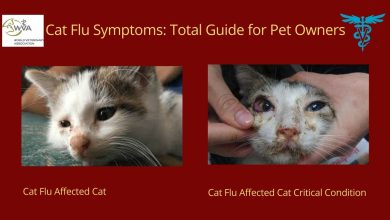Vaccination of Rabies: Best Guide for Farmers

Rabies is the deadliest disease that affects the CNS of mammals, including humans. With a nearly 100% fatality rate once symptoms appear, understanding and preventing rabies is crucial, especially for farmers in Bangladesh who are in close contact with potential carriers of the virus. This article delves into the history, types, spread, impact, diagnosis, prevention, and Vaccination of rabies, offering essential advice for Bangladeshi farmers.
Table of Contents
The History of Rabies
Rabies has a long history, with records dating back to ancient civilizations. The first detailed description of rabies was found in the Mesopotamian Codex of Eshnunna around 1930 BC, which prescribed fines for owners of rabid dogs that caused harm. The term “rabies” originates from the Latin word “rabere,” meaning “to rave.” In the 19th century, Louis Pasteur developed the first rabies vaccine, significantly reducing the disease’s prevalence.
Types of Rabies
Rabies is caused by the rabies virus, a member of the Lyssavirus genus. There are two primary forms:
- Furious Rabies: Characterized by hyperactivity, hallucinations, and hydrophobia (fear of water).
- Paralytic Rabies: Marked by muscle paralysis, starting at the site of the bite and gradually spreading. This form is less common but more challenging to diagnose. How Rabies Spreads
Rabies is primarily spread through the bite of an infected animal, as the virus is present in the saliva. In Bangladesh, the most common carriers are domestic dogs, but other animals such as bats, cats, and livestock can also transmit the virus. The virus travels from the site of the bite through the peripheral nerves to the brain, where it multiplies and causes severe neurological damage.
Impact of Rabies on Humans
Rabies has a profound impact on humans, particularly in rural areas with limited access to healthcare. Once symptoms get appearing,it is almost always deadly. Early symptoms include fever, headache, and general weakness, which quickly progress to neurological symptoms such as confusion, agitation, hallucinations, and hydrophobia. The final stages involve paralysis, coma, and death.
Diagnosis of Rabies
Diagnosing rabies can be challenging, especially in the early stages. Several methods are used for diagnosis:
- Direct Fluorescent Antibody Test (dFA): This test is considered the gold standard for diagnosing rabies in animals. It identifies the presence of rabies virus in brain tissues.
- RT-PCR: This molecular test can detect rabies virus RNA in saliva, cerebrospinal fluid, or brain tissue.
- Serology Tests: These tests detect rabies antibodies in the blood or cerebrospinal fluid but are less commonly used due to lower sensitivity. Preventive Methods
Prevention is the most effective way to control rabies.
Lumpy Skin Disease Treatment: Visit Now
Here are key preventive measures:
- Vaccination: Both pre-exposure and post-exposure vaccinations are crucial. Farmers should ensure their livestock and pets are vaccinated against rabies. Human vaccination of Rabies is recommended for those at high risk.
- Control of Stray Animals: Implementing programs to reduce stray dog populations through vaccination and sterilization.
- Public Awareness: Educating communities about rabies, its dangers, and the importance of vaccination and prompt medical treatment after animal bites.
- Use of Protective Gear: Farmers should use gloves and other protective gear when handling animals that might be infected. Treatment and Medicine Groups
Once symptoms of rabies appear, there is no effective treatment, and the disease is almost always fatal. Therefore, post-exposure prophylaxis (PEP) is crucial for preventing rabies after exposure. PEP includes:
- Wound Cleaning: Immediately wash the wound thoroughly with soap and water for at least 15 minutes.
- Rabies Immunoglobulin (RIG): Administered as soon as possible after exposure for passive immunity. It is especially important for individuals who have not been previously vaccinated.
- Vaccination of Rabies: A series Vaccination of Rabies are given over 14 days. For unvaccinated individuals, the regimen typically includes doses on days 0, 3, 7, and 14. Cost of Complete Recovery
The cost of Vaccination of Rabies can be significant, especially in rural areas.
Free Treatment of Rabies: Click Here
The cost includes:
- Rabies Immunoglobulin (RIG): Costs vary but can be quite high, ranging from BDT 5,000 to BDT 15,000 per dose.
- Vaccination of Rabies: Each dose of the vaccine can cost between BDT 500 to BDT 1,000. The full course of PEP requires multiple doses, adding to the overall cost.
- Medical Care: Additional costs may include hospitalization, wound care, and other supportive treatments. Advice for Bangladeshi Farmers.
Farmers in Bangladesh can take several steps to protect themselves, their families, and their livestock from rabies:
Read More: Visit Now
- Vaccinate Livestock and Pets: Ensure all domestic animals are regularly vaccinated against rabies.
- Avoid Stray Animals: Teach family members, especially children, to avoid contact with stray animals.
- Immediate Action After Bites: If bitten by any animal, immediately clean the wound with soap and water and seek medical attention for PEP.
- Report and Control: Report suspected rabies cases to local authorities and participate in community efforts to control stray animal populations.
- Educate and Advocate: Advocate for more accessible and affordable Vaccination of Rabies and treatments in rural areas. Conclusion
Rabies remains a significant public health concern in Bangladesh, but with proper knowledge and preventive measures, its impact can greatly reduce By understanding the disease, ensuring regular Vaccination of Rabies, and taking immediate action after potential exposures, farmers can protect their livestock and families from this deadly virus. Public awareness and community cooperation are key to achieving a rabies-free future in Bangladesh.
For more information on Vaccination of Rabies and its prevention, you can visit World Health Organization or the Centers for Disease Control and Prevention.By staying informed and proactive, Bangladeshi farmers can play a crucial role in combating rabies and ensuring the health and safety of their communities.




3 Comments